Open IoT Ecosystem for Enhanced Interoperability in Smart Cities—Example of Métropole De Lyon
Abstract
:1. Introduction
2. Towards Successful Open IoT Ecosystems—The European Ambition
“The API economy has changed how we think about building applications (think apps) and how we deploy software (think cloud). The largest impact of this change for business is speed: Business processes and data are no longer locked inside applications. The result is the death of data and application silos.”
2.1. Networked Things
2.2. ACCESS Layer
- the creation of new protocols that bypass traditional web protocols such as HTTP. Examples of well known protocols falling within this category are MQTT, CoAP or still the native XMPP protocol that directly rely on TCP or UDP;
- the reuse and leveraging of widely popular Web protocols such as HTTP. Examples of such protocols are OneM2M, O-MI, Webhook that directly rely on or extend the HTTP protocol.
2.3. FIND Layer
2.4. SHARE Layer
2.5. COMPOSE Layer
3. bIoTope Ecosystem: Architectural Building Blocks
3.1. Access & Find
3.2. Share & Compose
- choosing what data/service items they want to make available/visible to the user base engaged with the bIoTope ecosystem (cf. ➂ in Figure 2). Stages denoted by ➊ to ➏ in Figure 4a provides an overview of the IoTBnB back-end components, along with the different steps that gateway owners have to perform if they want to register to IoTBnB;
- specifying for which purpose the exposed data/service items can be used, for how long, and at what cost.
- searching for valuable IoT data/service providers, enabling multimodal search like (i) spatial/temporal search: one may want to search for services within a geographical area; (ii) keyword search: one may want to search for services falling within a specific sector such as mobility, healthcare, environment, etc. (iii) reputation search: one may want to search for a service ensuring a certain quality level, which may depend on various dimensions: data provider reputation, data stream quality, etc. (iv) contractual term or technology search: one may want to search only for IoT data/service producers that make available data/service for free, or who are compliant with one or more crypto-currencies or still with specific license conditions;
- trading and negotiating for accessing one or more data/service items.
4. bIoTope Ecosystem Serving as Interoperability Enabler Of “Smart Métropole de Lyon” Strategy
4.1. Pilot context & Networked Things layer
4.2. Access & Find Layers
- When the load is relatively low (i.e., between 1 and 300 concurrent users [0 s; 200 s]), the response time are mainly less than s (i.e., more than 65% of the values);
- When the load increases (due to the increase of users [200 s; 600 s]), the probability of response time being equal to s decreases accordingly (i.e., % of the values). In addition, the probability of having response times between 1 to slightly increases. However, all the response times remains under 4 s;
- Finally, when the number of users is reduced back to 300, the server progressively adapts itself and the probability of short response time (≈0.5 s) increases to more than of the values.
4.3. Share & Compose Layers
5. Conclusions
Acknowledgments
Conflicts of Interest
References
- Botta, A.; De Donato, W.; Persico, V.; Pescapé, A. Integration of cloud computing and internet of things: A survey. Future Gener. Comput. Syst. 2016, 56, 684–700. [Google Scholar] [CrossRef]
- Al-Fuqaha, A.; Guizani, M.; Mohammadi, M.; Aledhari, M.; Ayyash, M. Internet of Things: A Survey on Enabling Technologies, Protocols and Applications. IEEE Commun. Surv. Tutor. 2015. [Google Scholar] [CrossRef]
- Perera, C.; Zaslavsky, A.; Christen, P.; Georgakopoulos, D. Context Aware Computing for The Internet of Things: A Survey. IEEE Commun. Surv. Tutor. 2014, 16, 414–454. [Google Scholar] [CrossRef]
- Ahlgren, B.; Hidell, M.; Ngai, E.C.H. Internet of Things for Smart Cities: Interoperability and Open Data. IEEE Internet Comput. 2016, 20, 52–56. [Google Scholar] [CrossRef]
- Kubler, S.; Robert, J.; Främling, K.; Hefnawy, A.; Cherifi, C.; Bouras, A. Open IoT Ecosystem for Sporting Event Management. IEEE Access 2017, 5, 7064–7079. [Google Scholar] [CrossRef]
- Vermesan, O.; Friess, P. (Eds.) Digitising the Industry Internet of Things Connecting the Physical, Digital and Virtual Worlds; River Publishers: Delft, The Netherlands, 2016. [Google Scholar]
- Guinard, D.; Trifa, V. Building the Web of Things: With Examples in Node. JS and Raspberry PI; Manning Publications Co.: Greenwich, CT, USA, 2016. [Google Scholar]
- Espinha, T.; Zaidman, A.; Gross, H.G. Web API growing pains: Loosely coupled yet strongly tied. J. Syst. Softw. 2015, 100, 27–43. [Google Scholar] [CrossRef]
- Raggett, D. The Web of Things: Challenges and Opportunities. Computer 2015, 48, 26–32. [Google Scholar] [CrossRef]
- AIOTI. Alliance for Internet of Things Innovation (AIOTI); European Commission: Brussels, Belgium, 2015. [Google Scholar]
- Swetina, J.; Lu, G.; Jacobs, P.; Ennesser, F.; Song, J. Toward a standardized common M2M service layer platform: Introduction to oneM2M. IEEE Wirel. Commun. 2014, 21, 20–26. [Google Scholar] [CrossRef]
- Minerva, R. Towards a Definition of the Internet of Things. IEEE Internet Initiat. 2015, 1, 1–86. [Google Scholar]
- Rhee, S. Catalyzing the Internet of Things and smart cities: Global City Teams Challenge. In Proceedings of the 1st International Workshop on Science of Smart City Operations and Platforms Engineering (SCOPE) in Partnership with Global City Teams Challenge, Vienna, Austria, 11 April 2016; pp. 1–4. [Google Scholar]
- Meddeb, A. Internet of things standards: Who stands out from the crowd? IEEE Commun. Mag. 2016, 54, 40–47. [Google Scholar] [CrossRef]
- Gazis, V. A Survey of Standards for Machine-to-Machine and the Internet of Things. IEEE Commun. Surv. Tutor. 2017, 19, 482–511. [Google Scholar] [CrossRef]
- Osseiran, A.; Elloumi, O.; Song, J.; Monserrat, J.F. Internet of Things. IEEE Commun. Stand. Mag. 2017, 1, 84. [Google Scholar] [CrossRef]
- Kim, D.H.; Lee, H.; Kwak, J. Standards as a driving force that influences emerging technological trajectories in the converging world of the Internet and things: An investigation of the M2M/IoT patent network. Res. Policy 2017, 46, 1234–1254. [Google Scholar] [CrossRef]
- Turkama, P.; Schaffers, H. Research and Innovation Programmes Shaping Ecosystems for Open Innovation—Some Lessons; Open Innovation 2.0 Yearbook 2015; European Commission: Brussels, Belgium, 2015. [Google Scholar]
- Chaudhuri, A. Internet of Things data protection and privacy in the era of the General Data Protection Regulation. J. Data Prot. Priv. 2016, 1, 64–75. [Google Scholar]
- Miguel, J.C.; Casado, M.A. GAFAnomy (Google, Amazon, Facebook and Apple): The Big Four and the b-Ecosystem. In Dynamics of Big Internet Industry Groups and Future Trends; Springer: Berlin, Germany, 2016; pp. 127–148. [Google Scholar]
- Kubler, S.; Främling, K.; Zaslavsky, A. Digitising the Industry Internet of Things Connecting the Physical, Digital and Virtual Worlds; Chapter bIoTope: Building an IoT Open Innovation Ecosystem for Connected Smart Objects; River Publishers: Delft, The Netherlands, 2016; pp. 270–274. [Google Scholar]
- Evans, P.C.; Basole, R.C. Revealing the API ecosystem and enterprise strategy via visual analytics. Commun. ACM 2016, 59, 26–28. [Google Scholar] [CrossRef]
- Tan, W.; Fan, Y.; Ghoneim, A.; Hossain, M.A.; Dustdar, S. From the Service-Oriented Architecture to the Web API Economy. IEEE Internet Comput. 2016, 20, 64–68. [Google Scholar] [CrossRef]
- Holley, K.; Antoun, S.; Arsanjani, A.; Bill Brown, W.A.; Costas, J.F.; Cozzi, C.; Goyal, P.; Iyengar, S.; Jamjoom, H.; Jensen, C.; et al. The Power of the API Economy—Stimulate Innovation, Increase Productivity, Develop New Channels, and Reach New Markets; IBM Corporate: Foster City, CA, USA, 2014. [Google Scholar]
- Perera, C. Sensing as a Service (S 2 aaS): Buying and Selling IoT Data. arXiv, 2016; arXiv:1702.02380. [Google Scholar]
- Tschofenig, H.; Arkko, J.; McPherson, D. Architectural Considerations in Smart Object Networking; Tech. Rep. RFC-7452; Internet Engineering Task Force: Fremont, CA, USA, 2015. [Google Scholar]
- Strassner, J.; Diab, W.W. A semantic interoperability architecture for Internet of Things data sharing and computing. In Proceedings of the 2016 IEEE 3rd World Forum on Internet of Things (WF-IoT), Reston, VA, USA, 12–14 December 2016; pp. 609–614. [Google Scholar]
- Berners-Lee, T.; Hendler, J.; Lassila, O. The semantic web. Sci. Am. 2001, 284, 28–37. [Google Scholar] [CrossRef]
- Pfisterer, D.; Romer, K.; Bimschas, D.; Kleine, O.; Mietz, R.; Truong, C.; Hasemann, H.; Kröller, A.; Pagel, M.; Hauswirth, M.; et al. SPITFIRE: Towards a semantic web of things. IEEE Commun. Mag. 2011, 49, 40–48. [Google Scholar] [CrossRef]
- Kiljander, J.; D’Elia, A.; Morandi, F.; Hyttinen, P.; Takalo-Mattila, J.; Ylisaukko-Oja, A.; Soininen, J.; Cinotti, T.S. Semantic interoperability architecture for pervasive computing and internet of things. IEEE Access 2014, 2, 856–873. [Google Scholar] [CrossRef]
- Compton, M.; Barnaghi, P.; Bermudez, L.; García-Castro, R.; Corcho, O.; Cox, S.; Graybeal, J.; Hauswirth, M.; Henson, C.; Herzog, A.; et al. The SSN ontology of the W3C semantic sensor network incubator group. Web Seman. Sci. Serv. Agents World Wide Web 2012, 17, 25–32. [Google Scholar] [CrossRef] [Green Version]
- Vandenbussche, P.Y.; Atemezing, G.A.; Poveda-Villalón, M.; Bernard, V. Linked Open Vocabularies (LOV): A gateway to reusable semantic vocabularies on the Web. Semant. Web 2017, 8, 437–452. [Google Scholar] [CrossRef]
- Gyrard, A.; Serrano, M.; Atemezing, G.A. Semantic web methodologies, best practices and ontology engineering applied to Internet of Things. In Proceedings of the 2015 IEEE 2nd World Forum on Internet of Things (WF-IoT), Milan, Italy, 14–16 December 2015; pp. 412–417. [Google Scholar]
- McIlraith, S.A.; Son, T.C.; Zeng, H. Semantic web services. IEEE Intell. Syst. 2001, 16, 46–53. [Google Scholar] [CrossRef]
- Barnaghi, P.; Wang, W.; Henson, C.; Taylor, K. Semantics for the Internet of Things: early progress and back to the future. Int. J. Semant. Web Inf. Syst. (IJSWIS) 2012, 8, 1–21. [Google Scholar] [CrossRef]
- Garriga, M.; Mateos, C.; Flores, A.; Cechich, A.; Zunino, A. RESTful service composition at a glance: A survey. J. Netw. Comput. Appl. 2016, 60, 32–53. [Google Scholar] [CrossRef]
- Sicari, S.; Rizzardi, A.; Grieco, L.A.; Coen-Porisini, A. Security, privacy and trust in Internet of Things: The road ahead. Comput. Netw. 2014, 76, 146–164. [Google Scholar] [CrossRef]
- Roman, R.; Zhou, J.; Lopez, J. On the features and challenges of security and privacy in distributed internet of things. Comput. Netw. 2013, 57, 2266–2279. [Google Scholar] [CrossRef]
- Weber, R.H. Internet of Things—New security and privacy challenges. Comput. Law Secur. Rev. 2010, 26, 23–30. [Google Scholar] [CrossRef]
- Jansen, S.; Brinkkemper, S.; Souer, J.; Luinenburg, L. Shades of gray: Opening up a software producing organization with the open software enterprise model. J. Syst. Softw. 2012, 85, 1495–1510. [Google Scholar] [CrossRef]
- Sjöberg, M.; Chen, H.H.; Floréen, P.; Koskela, M.; Kuikkaniemi, K.; Lehtiniemi, T.; Peltonen, J. Digital Me: Controlling and Making Sense of My Digital Footprint. In Proceedings of the International Workshop on Symbiotic Interaction, Padua, Italy, 29–30 September 2016; Springer: Berlin, Germany, 2016; pp. 155–167. [Google Scholar]
- Zhong, N.; Ma, J.; Huang, R.; Liu, J.; Yao, Y.; Zhang, Y.; Chen, J. Research challenges and perspectives on Wisdom Web of Things (W2T). In Wisdom Web of Things; Springer: Berlin, Germany, 2016; pp. 3–26. [Google Scholar]
- Yan, Z.; Zhang, P.; Vasilakos, A.V. A survey on trust management for Internet of Things. J. Netw. Comput. Appl. 2014, 42, 120–134. [Google Scholar] [CrossRef]
- Zhao, K. A Survey on the Internet of Things Security. In Proceedings of the 9th International Conference on Computational Intelligence and Security, Emei Mountain, China, 14–15 December 2013; pp. 663–667. [Google Scholar]
- La Polla, M.; Martinelli, F.; Sgandurra, D. A Survey on Security for Mobile Devices. IEEE Commun. Surv. Tutor. 2013, 15, 446–471. [Google Scholar] [CrossRef]
- Atzori, L.; Iera, A.; Morabito, G. The internet of things: A survey. Comput. Netw. 2010, 54, 2787–2805. [Google Scholar] [CrossRef]
- Lombriser, P.; Dalpiaz, F.; Lucassen, G.; Brinkkemper, S. Gamified requirements engineering: model and experimentation. In Proceedings of the International Working Conference on Requirements Engineering: Foundation for Software Quality, Gothenburg, Sweden, 14–17 March 2016; Springer: Berlin, Germany, 2016; pp. 171–187. [Google Scholar]
- Tukiainen, T.; Leminen, S.; Westerlund, M. Cities as collaborative innovation platforms. Technol. Innov. Manag. Rev. 2015, 5, 10. [Google Scholar]
- Cohen, B.; Amorós, J.E.; Lundy, L. The generative potential of emerging technology to support startups and new ecosystems. Bus. Horiz. 2017, 60, 741–884. [Google Scholar] [CrossRef]
- Gretzel, U.; Werthner, H.; Koo, C.; Lamsfus, C. Conceptual foundations for understanding smart tourism ecosystems. Comput. Hum. Behav. 2015, 50, 558–563. [Google Scholar] [CrossRef]
- Balaji, M.S.; Roy, S.K. Value co-creation with Internet of Things technology in the retail industry. J. Mark. Manag. 2017, 33, 7–31. [Google Scholar] [CrossRef]
- Robert, J.; Kubler, S.; Le Traon, Y. Micro-billing framework for IoT: Research & Technological foundations. In Proceedings of the IEEE 4th International Conference on Future Internet of Things and Cloud, Vienna, Austria, 22–24 August 2016; pp. 301–308. [Google Scholar]
- Blackstock, M.; Lea, R. IoT mashups with the WoTKit. In Proceedings of the 3rd International Conference on the Internet of Things, Wuxi, China, 24–26 October 2012; pp. 159–166. [Google Scholar]
- Heo, S.; Woo, S.; Im, J.; Kim, D. IoT-MAP: IoT mashup application platform for the flexible IoT ecosystem. In Proceedings of the 5th International Conference on the Internet of Things, Seoul, Korea, 26–28 October 2015; pp. 163–170. [Google Scholar]
- Gamma, E.; Helm, R.; Johnson, R.; Vlissides, J. Design patterns: elements of reusable object-oriented software. Read. Addison Wesley 1995, 49, 11. [Google Scholar]
- Yoo, M.J.; Grozel, C.; Kiritsis, D. Closed-Loop Lifecycle Management of Service and Product in the Internet of Things: Semantic Framework for Knowledge Integration. Sensors 2016, 16, 1053. [Google Scholar] [CrossRef] [PubMed]
- Främling, K.; Kubler, S.; Buda, A. Universal Messaging Standards for the IoT from a Lifecycle Management Perspective. IEEE Internet Things J. 2014, 1, 319–327. [Google Scholar] [CrossRef]
- Kubler, S.; Främling, K.; Derigent, W. P2P Data synchronization for product lifecycle management. Comput. Ind. 2015, 66, 82–98. [Google Scholar] [CrossRef]
- Dave, B.; Kubler, S.; Främling, K.; Koskela, L. Opportunities for enhanced lean construction management using Internet of Things standards. Autom. Constr. 2016, 61, 86–97. [Google Scholar] [CrossRef]
- Decker, C.; Wattenhofer, R. A fast and scalable payment network with Bitcoin duplex micropayment channels. In Symposium on Self-Stabilizing Systems; Springer: Berlin, Germany, 2015; pp. 3–18. [Google Scholar]
- Poon, J.; Dryja, T. The Bitcoin Lightning Network: Scalable Off-Chain Instant Payments. Technical Report (Draft). 2015. Available online: https://lightning.network/lightning-network-paper.pdf (accessed on 8 December 2017).
- Hope-Bailie, A.; Thomas, S. Interledger: Creating a standard for payments. In Proceedings of the 25th International Conference Companion on World Wide Web, Montreal, QC, Canada, 11–15 April 2016; pp. 281–282. [Google Scholar]
- Sompolinsky, Y.; Zohar, A. Secure high-rate transaction processing in Bitcoin. In Proceedings of the International Conference on Financial Cryptography and Data Security, San Juan, Puerto Rico, 30 January 2015; Springer: Berlin, Germany, 2015; pp. 507–527. [Google Scholar]
- Nations, U. World Urbanization Prospects: The 2014 Revision, Highlights. Department of Economic and Social Affairs; Population Division, United Nations: New York, NY, USA, 2014. [Google Scholar]
- Gastaud, E. From Internet of Things to Smart Data for Smart Urban Monitoring. Int. Arch. Photogramm. Remote Sens. Spat. Inf. Sci. 2017, 42. [Google Scholar] [CrossRef]
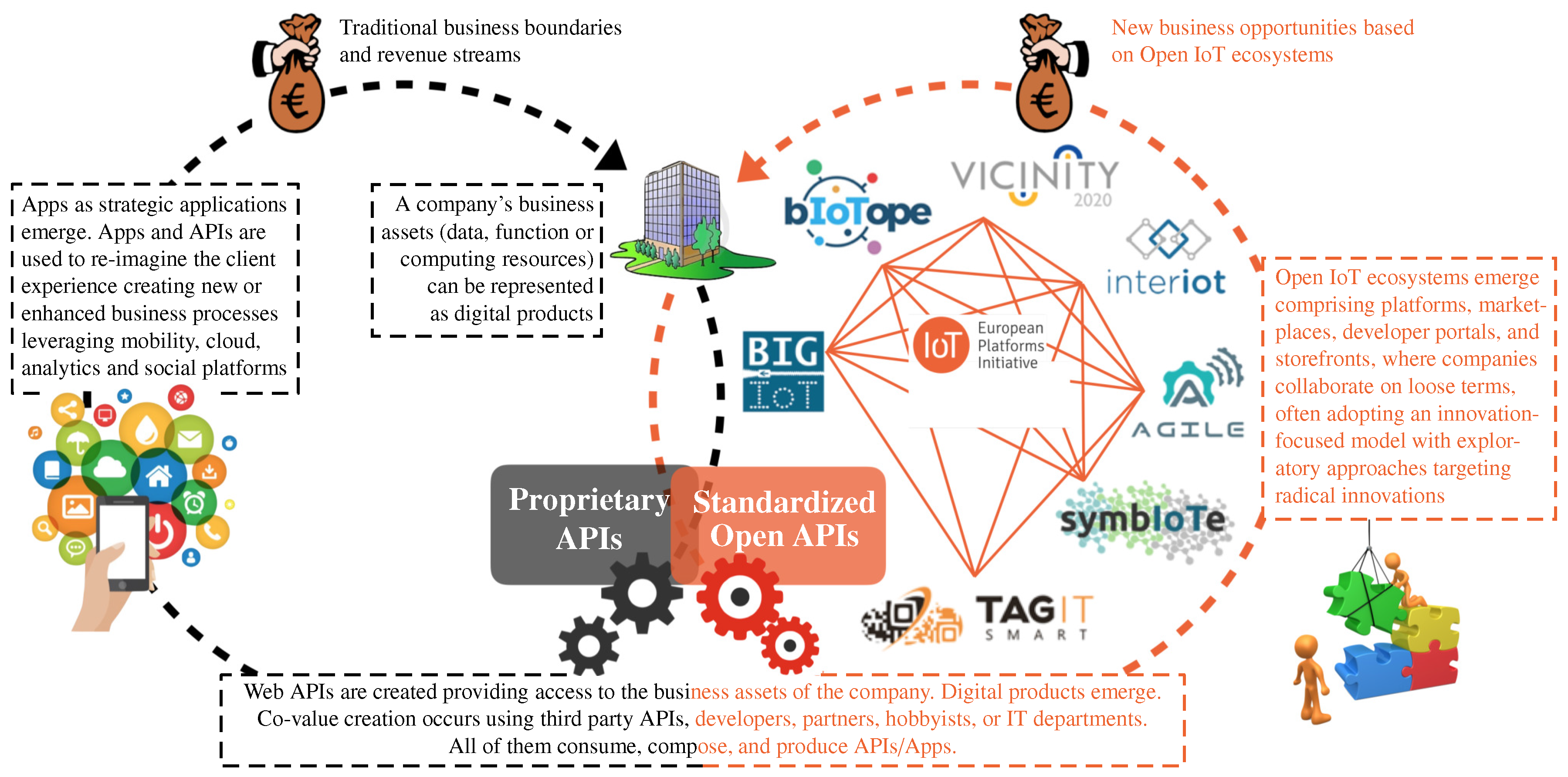
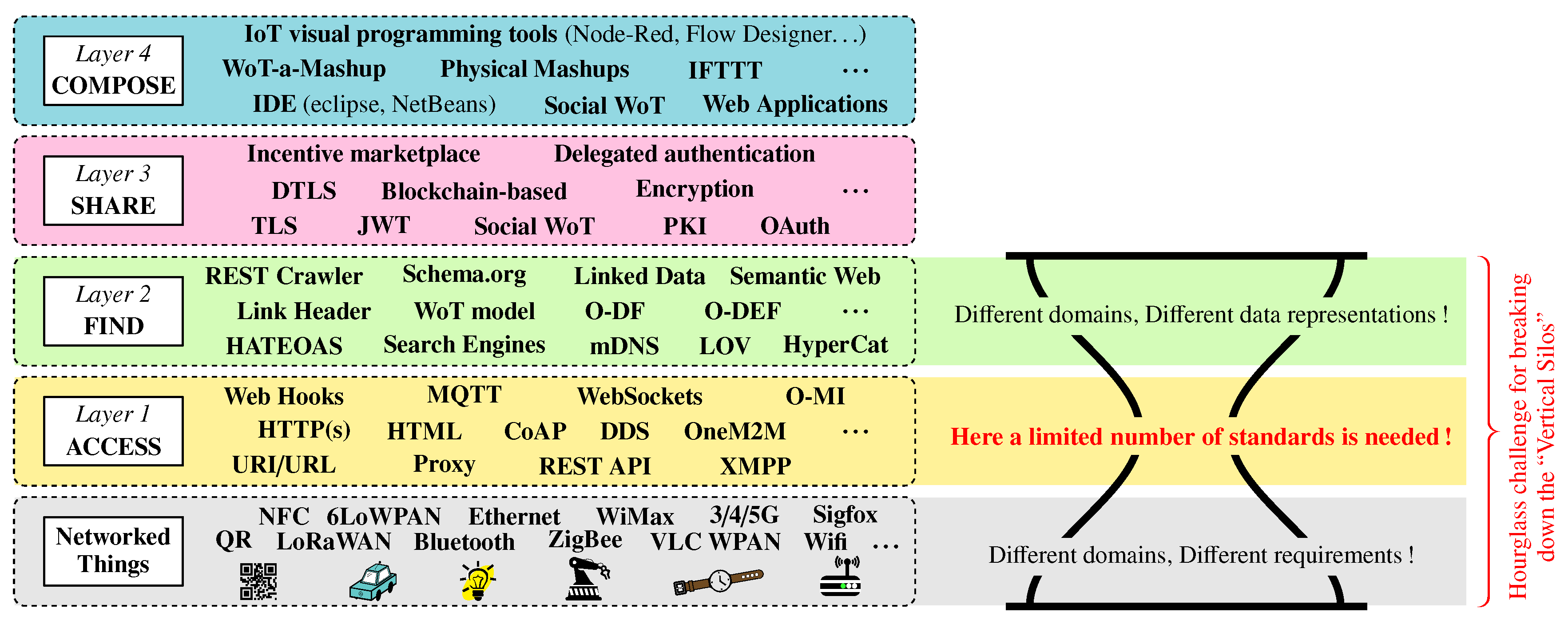

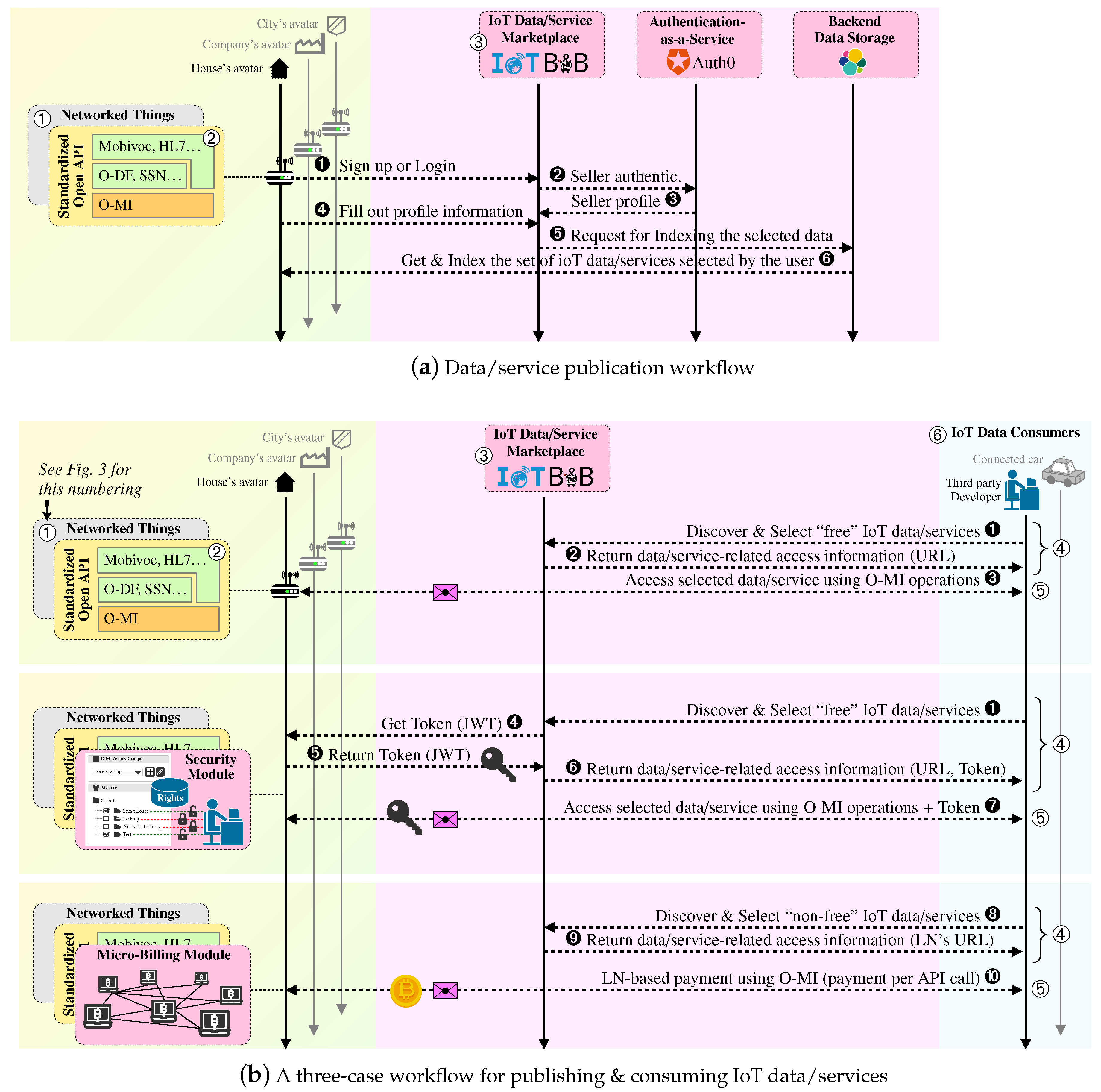

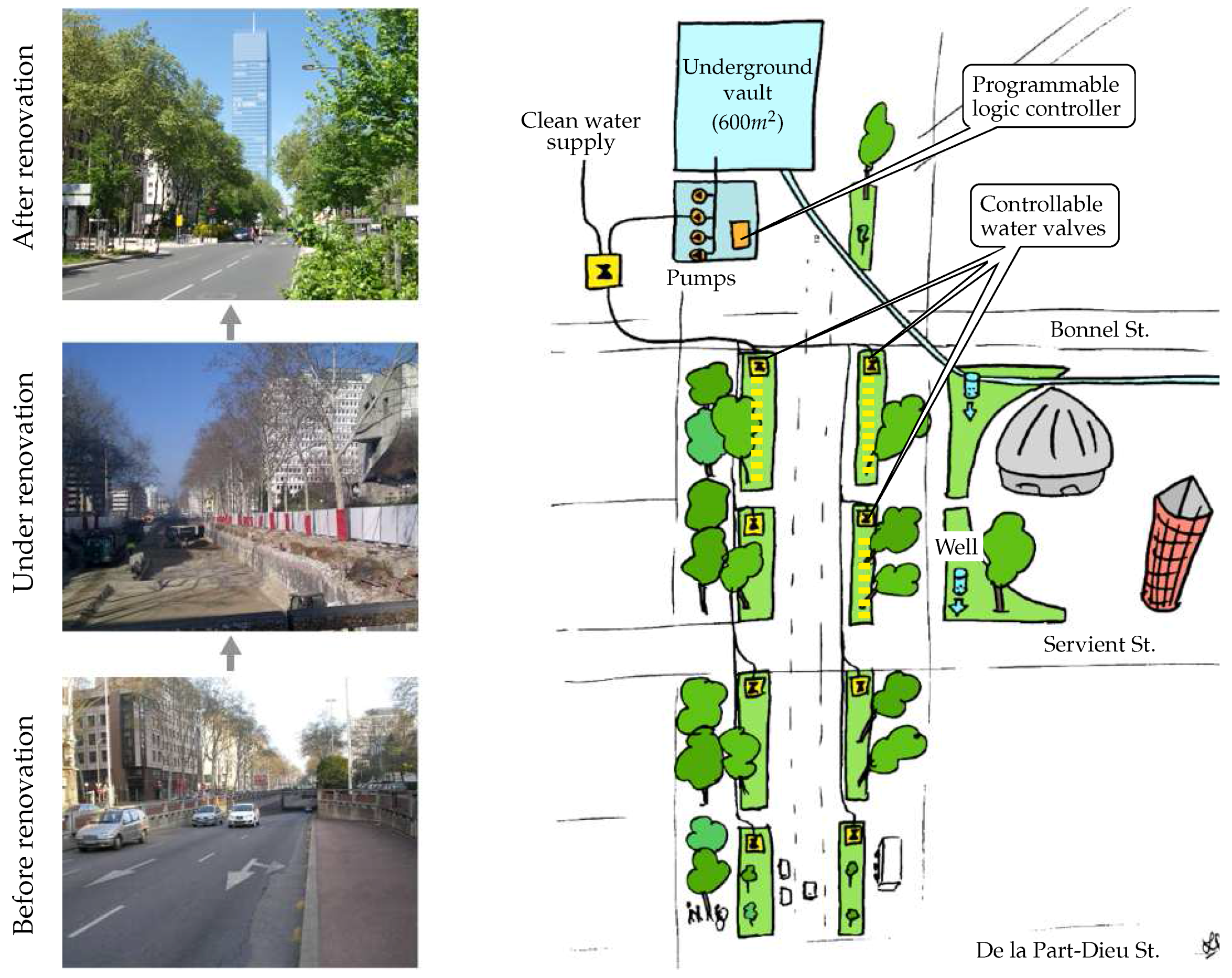
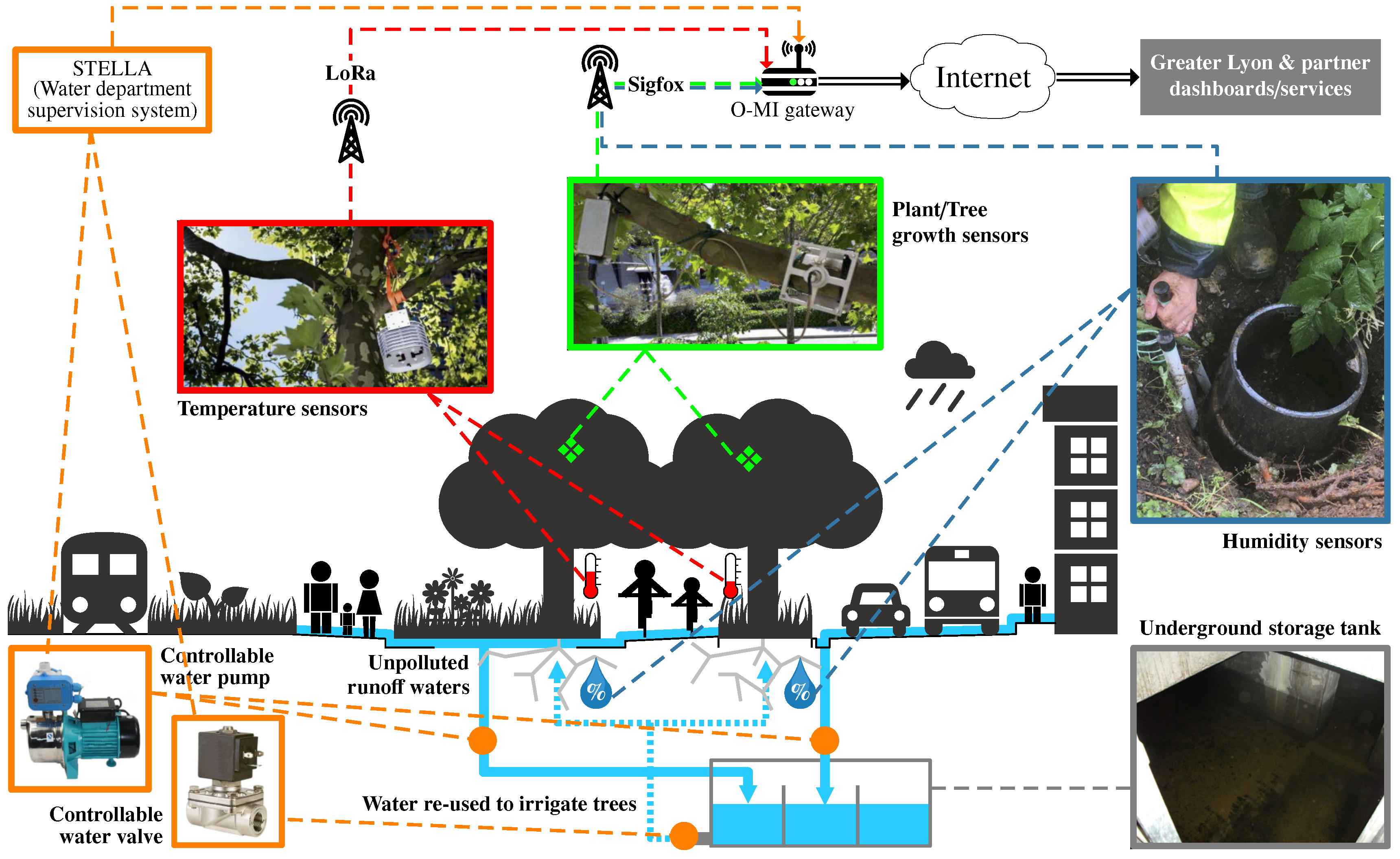
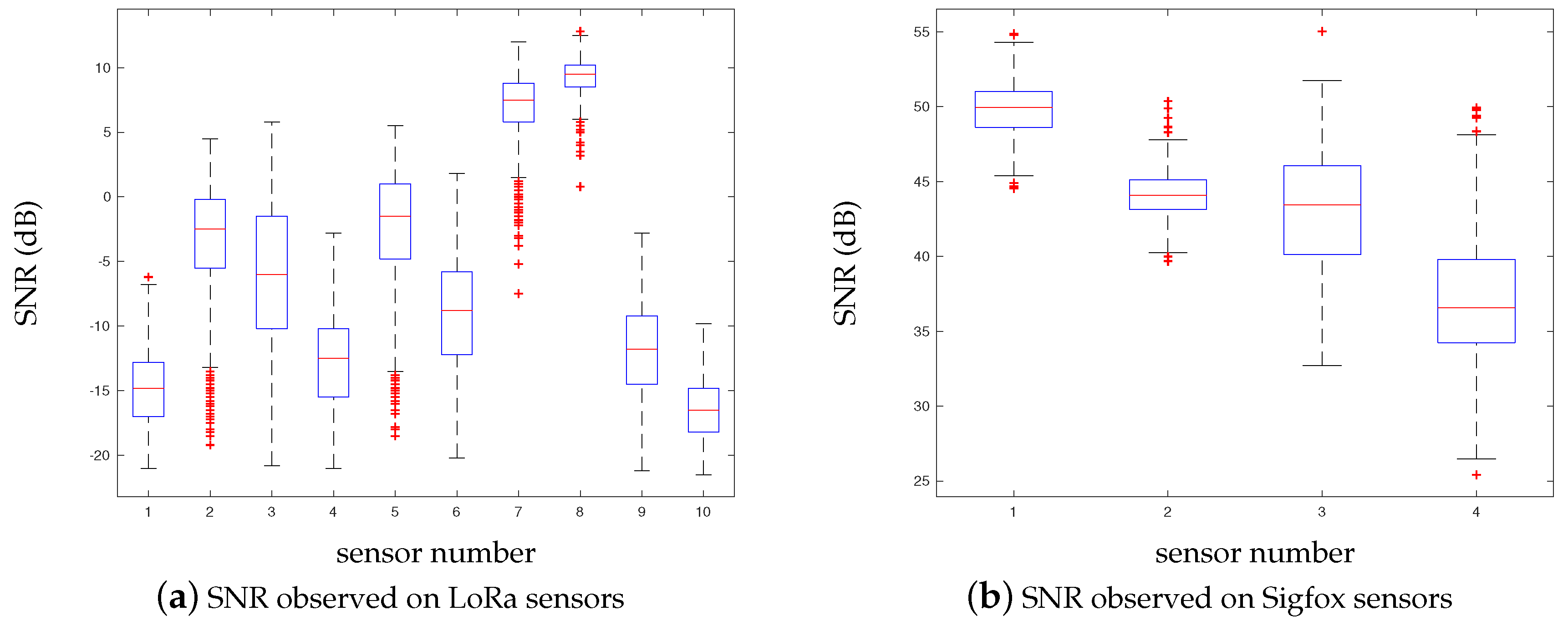
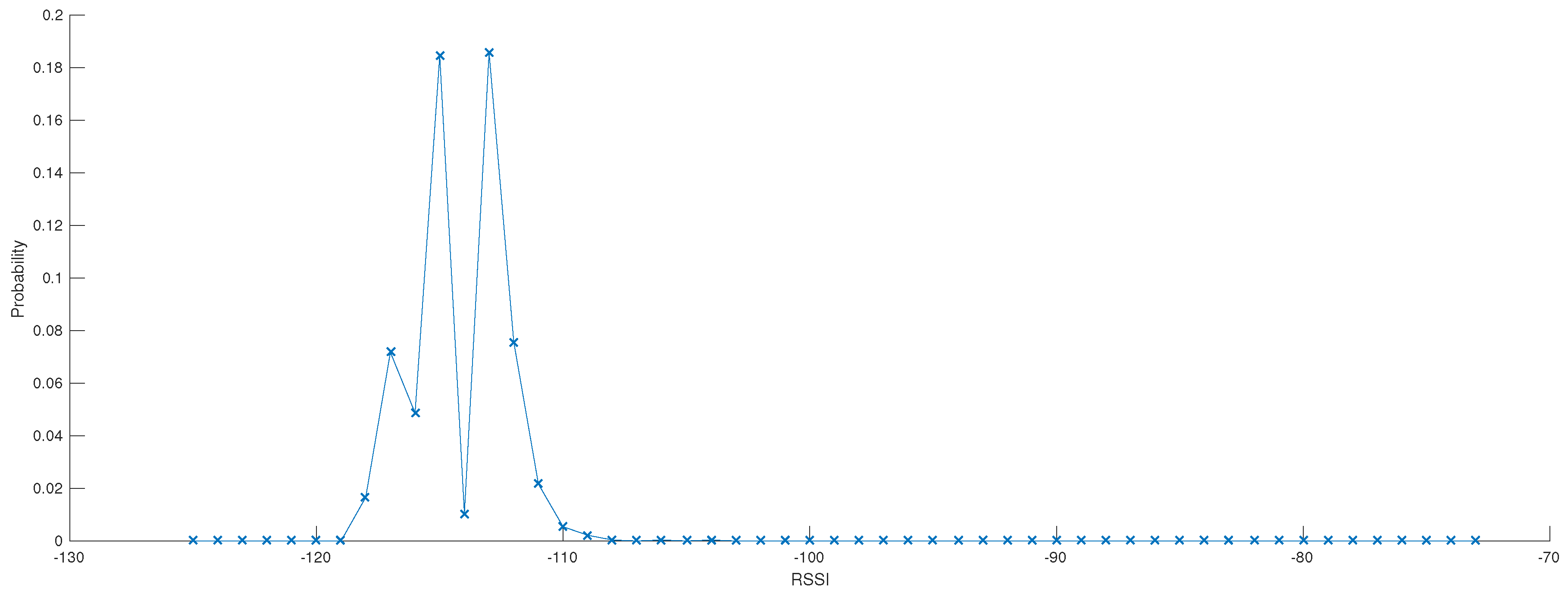
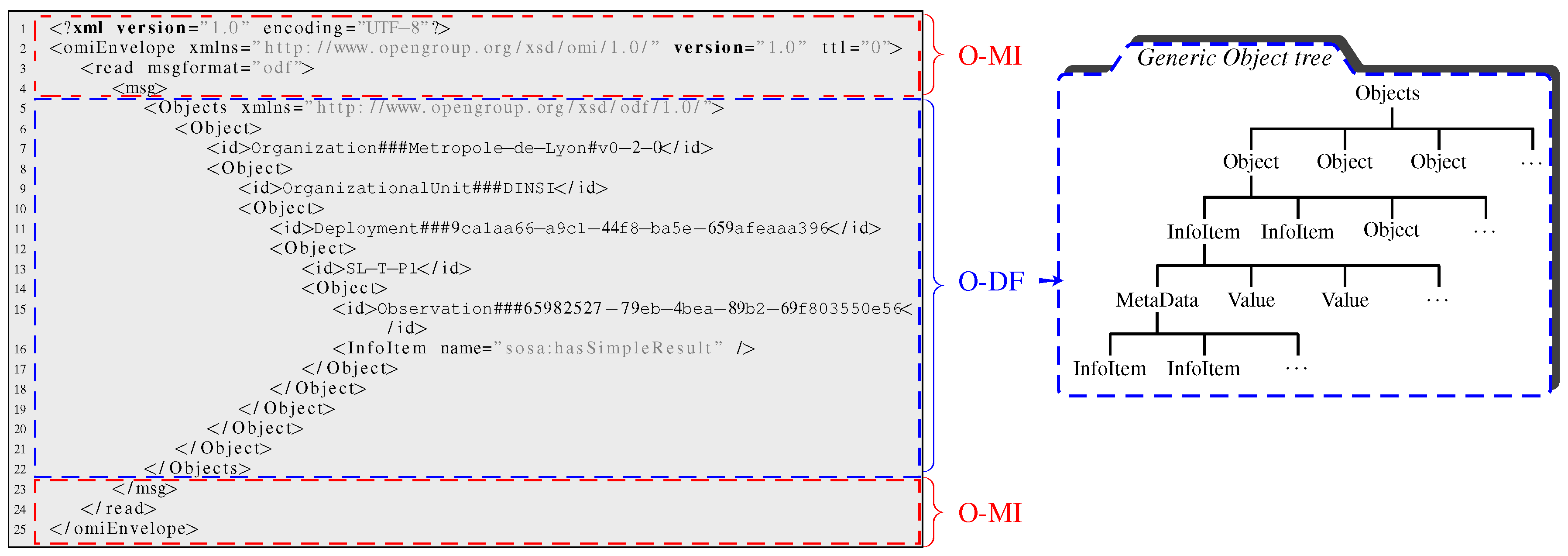
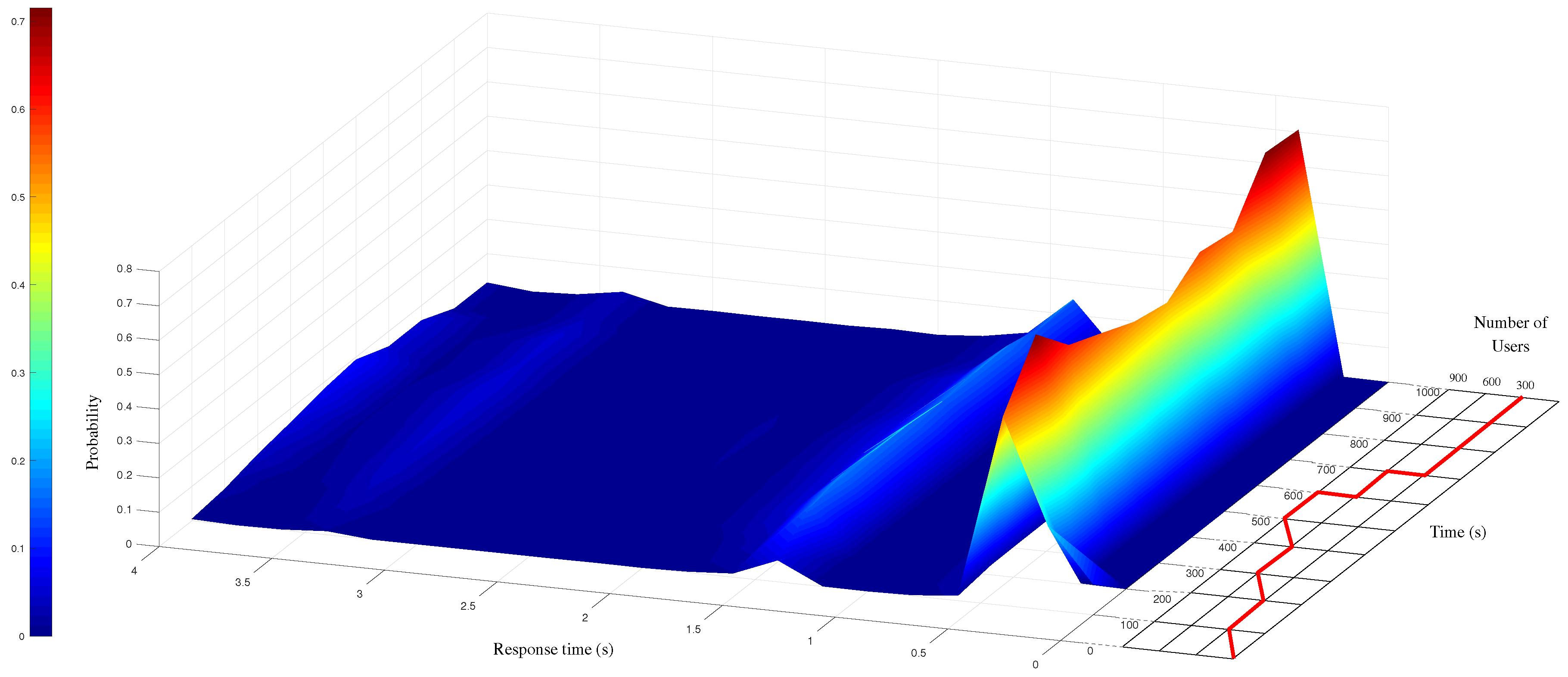
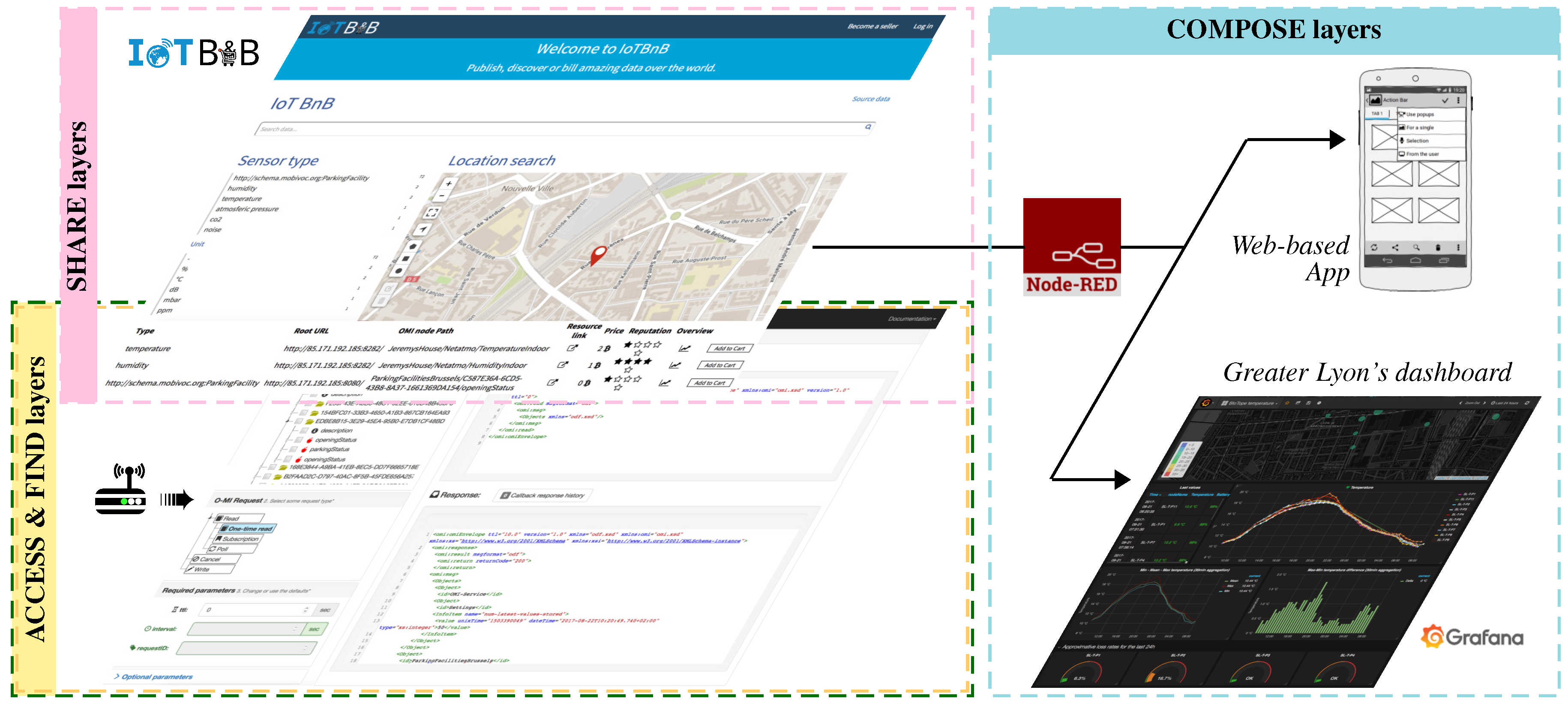
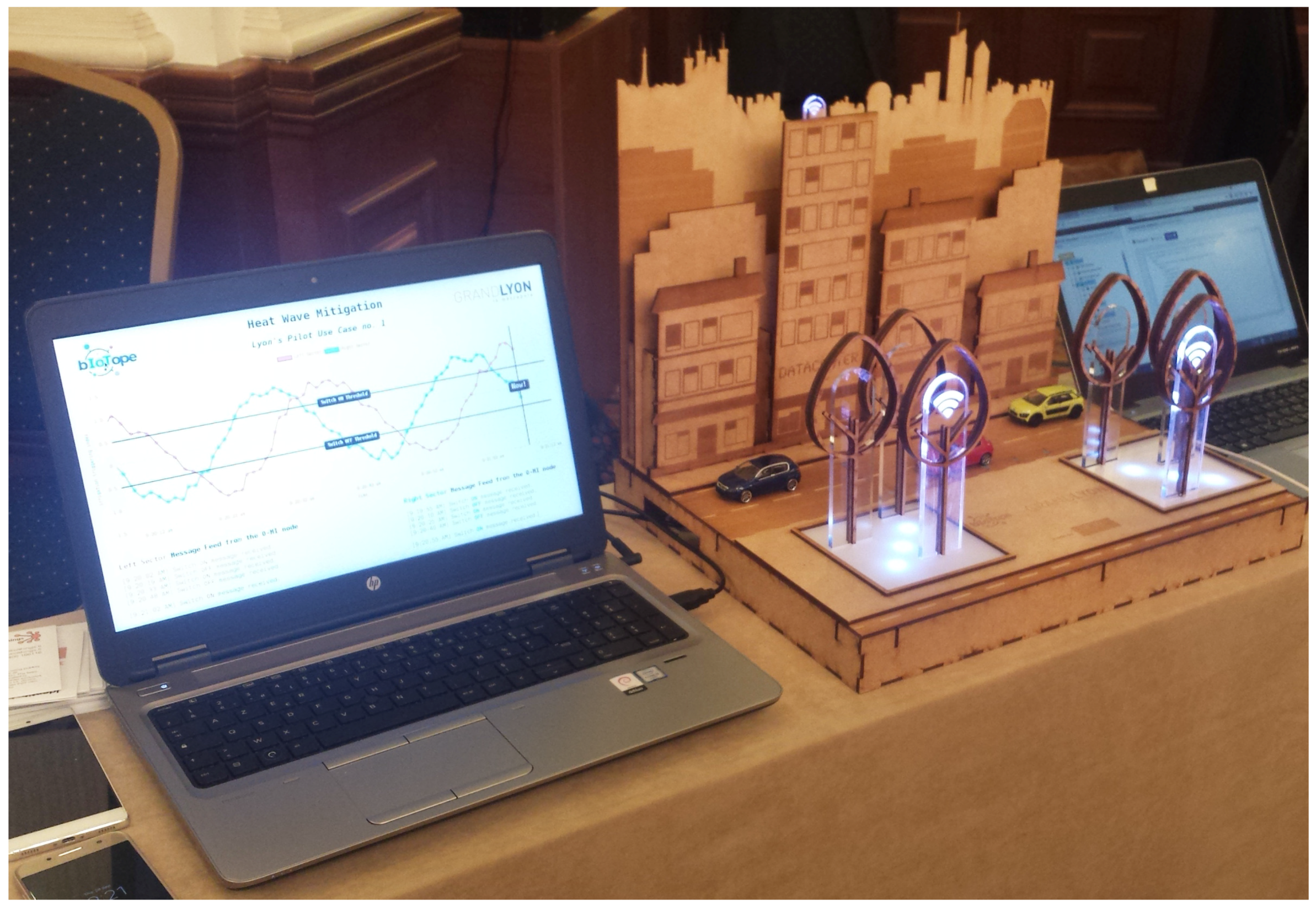
| Requirements | Description |
|---|---|
| Access control of resources | Only users having access rights can perform O-MI/O-DF request actions over the data/service tree. |
| Group-based rules | All end-users must belong to one or more groups, for which access rules must be specified. |
| Operation-based permission | A permission (based on the possible O-MI verbs: e.g., read-only or read-write) can be specified for each data/service item and depending on the user group. |
| Recursive permission | Permission is inherited from the parent’s Object as well as overridden for particular children. |
| Management interface | The gateway administrator must be able to manage access rights through a centralized user interface. |
| Sensor no | 1 | 2 | 3 | 4 | 5 | 6 | 7 | 8 | 9 | 10 | |
|---|---|---|---|---|---|---|---|---|---|---|---|
| Radial Dist. | 699 m | 506 m | 440 m | 510 m | 353 m | 376 m | 254 m | 158 m | 381 m | 739 m | |
| min | 0 (0%) | 0 (0%) | 0 (0%) | 0 (0%) | 0 (0%) | 0 (0%) | 0 (0%) | 0 (0%) | 0 (0%) | 0 (0%) | |
| Packet loss | avg | 11 (23%) | 1 (2%) | 3 (6%) | 7 (15%) | 1 (2%) | 4 (8%) | 1 (2%) | 1 (2%) | 5 (11%) | 17 (36%) |
| max | 33 (69%) | 3 (6%) | 15 (31%) | 26 (54%) | 4 (8%) | 18 (38%) | 3 (6%) | 3 (6%) | 20 (42%) | 44 (92%) | |
© 2017 by the authors. Licensee MDPI, Basel, Switzerland. This article is an open access article distributed under the terms and conditions of the Creative Commons Attribution (CC BY) license (http://creativecommons.org/licenses/by/4.0/).
Share and Cite
Robert, J.; Kubler, S.; Kolbe, N.; Cerioni, A.; Gastaud, E.; Främling, K. Open IoT Ecosystem for Enhanced Interoperability in Smart Cities—Example of Métropole De Lyon. Sensors 2017, 17, 2849. https://doi.org/10.3390/s17122849
Robert J, Kubler S, Kolbe N, Cerioni A, Gastaud E, Främling K. Open IoT Ecosystem for Enhanced Interoperability in Smart Cities—Example of Métropole De Lyon. Sensors. 2017; 17(12):2849. https://doi.org/10.3390/s17122849
Chicago/Turabian StyleRobert, Jérémy, Sylvain Kubler, Niklas Kolbe, Alessandro Cerioni, Emmanuel Gastaud, and Kary Främling. 2017. "Open IoT Ecosystem for Enhanced Interoperability in Smart Cities—Example of Métropole De Lyon" Sensors 17, no. 12: 2849. https://doi.org/10.3390/s17122849





